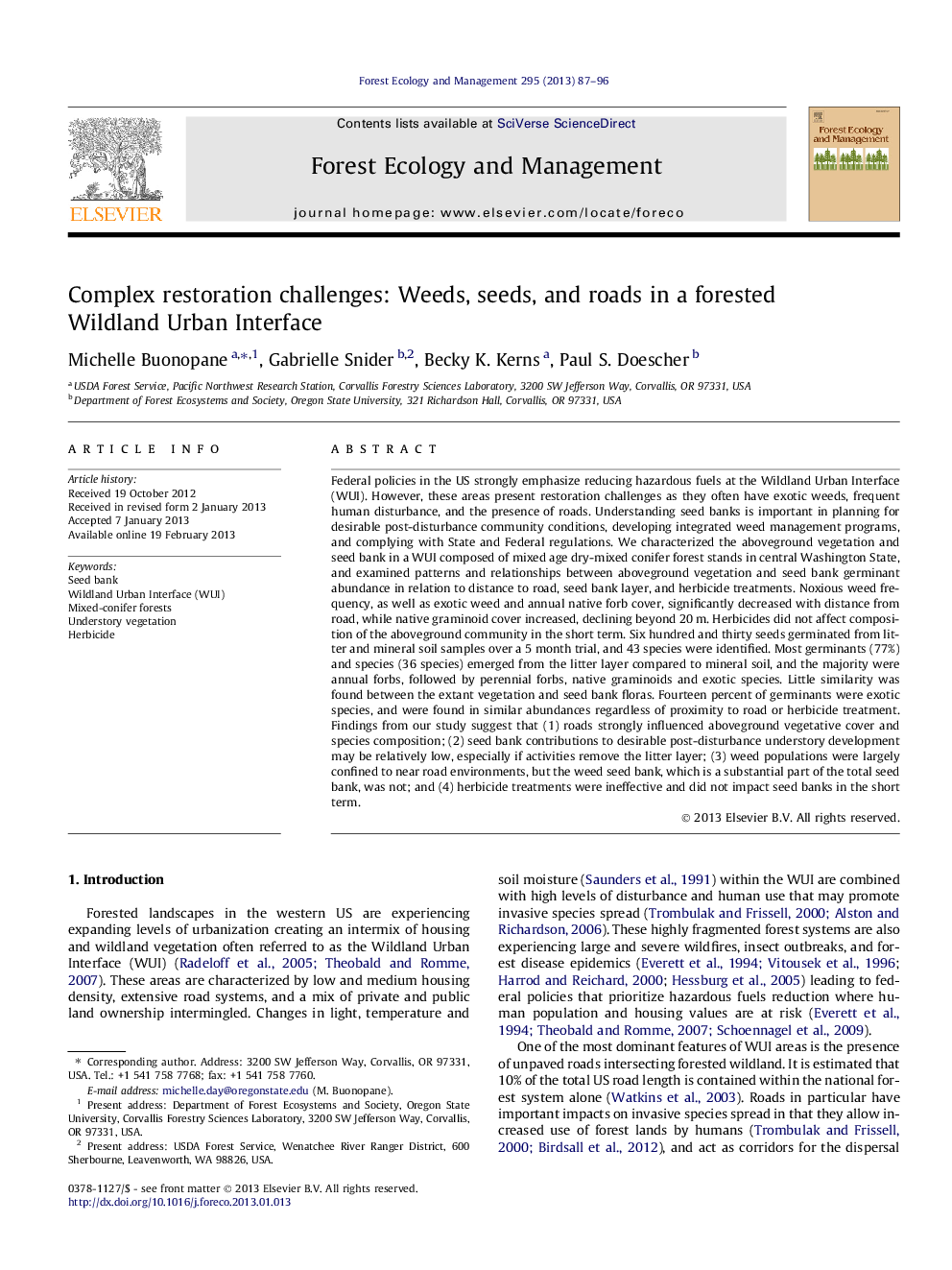| کد مقاله | کد نشریه | سال انتشار | مقاله انگلیسی | نسخه تمام متن |
|---|---|---|---|---|
| 86855 | 159217 | 2013 | 10 صفحه PDF | دانلود رایگان |

Federal policies in the US strongly emphasize reducing hazardous fuels at the Wildland Urban Interface (WUI). However, these areas present restoration challenges as they often have exotic weeds, frequent human disturbance, and the presence of roads. Understanding seed banks is important in planning for desirable post-disturbance community conditions, developing integrated weed management programs, and complying with State and Federal regulations. We characterized the aboveground vegetation and seed bank in a WUI composed of mixed age dry-mixed conifer forest stands in central Washington State, and examined patterns and relationships between aboveground vegetation and seed bank germinant abundance in relation to distance to road, seed bank layer, and herbicide treatments. Noxious weed frequency, as well as exotic weed and annual native forb cover, significantly decreased with distance from road, while native graminoid cover increased, declining beyond 20 m. Herbicides did not affect composition of the aboveground community in the short term. Six hundred and thirty seeds germinated from litter and mineral soil samples over a 5 month trial, and 43 species were identified. Most germinants (77%) and species (36 species) emerged from the litter layer compared to mineral soil, and the majority were annual forbs, followed by perennial forbs, native graminoids and exotic species. Little similarity was found between the extant vegetation and seed bank floras. Fourteen percent of germinants were exotic species, and were found in similar abundances regardless of proximity to road or herbicide treatment. Findings from our study suggest that (1) roads strongly influenced aboveground vegetative cover and species composition; (2) seed bank contributions to desirable post-disturbance understory development may be relatively low, especially if activities remove the litter layer; (3) weed populations were largely confined to near road environments, but the weed seed bank, which is a substantial part of the total seed bank, was not; and (4) herbicide treatments were ineffective and did not impact seed banks in the short term.
► Road edges strongly influenced aboveground vegetative cover and species composition.
► Road edges did not influence seed bank abundance or composition.
► Germinant density and richness were higher in litter layers compared to mineral soil.
► Little similarity was found in species composition or abundance between the seed bank and vegetation floras.
► Short-term herbicide application did not reduce noxious weed cover or germinant density.
Journal: Forest Ecology and Management - Volume 295, 1 May 2013, Pages 87–96